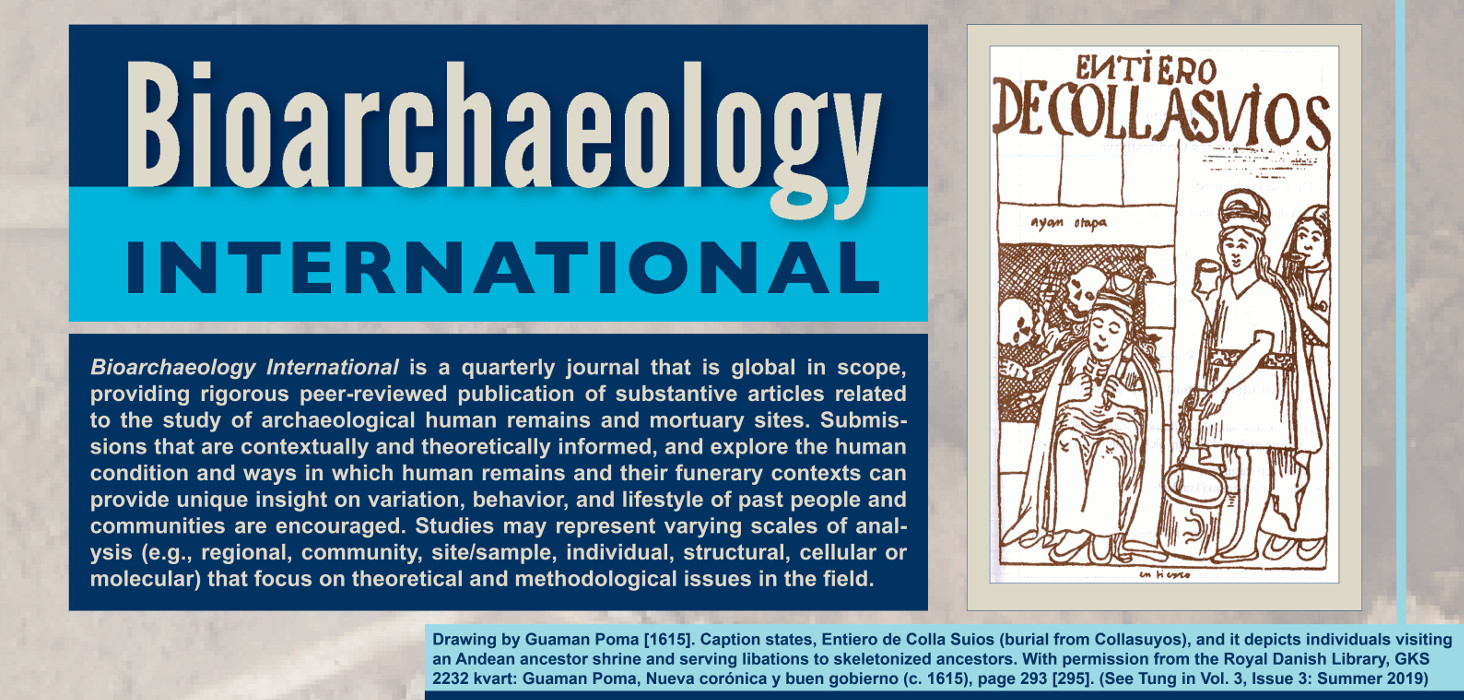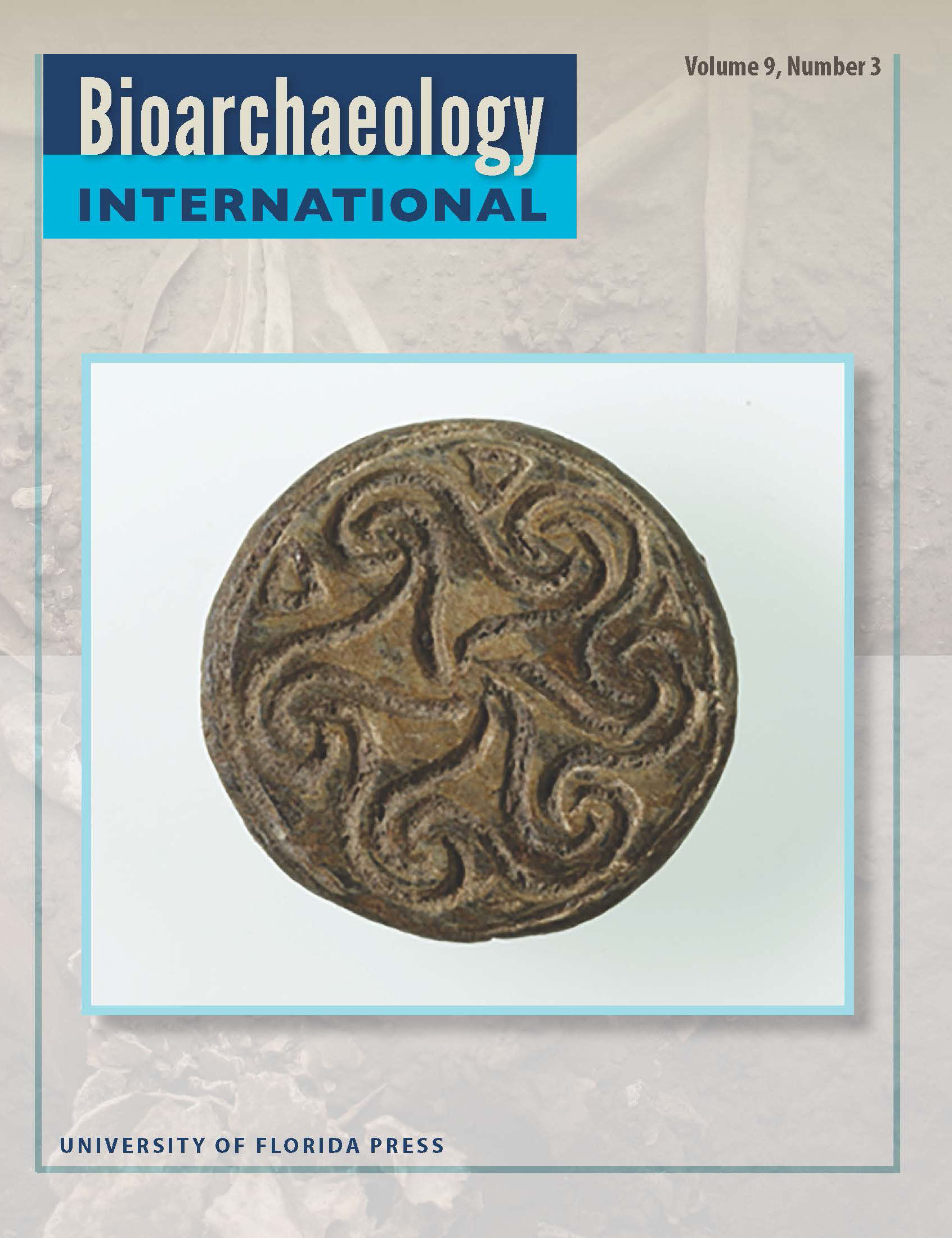Bioarchaeology International provides rigorous peer-reviewed publication of substantive articles in the growing field of bioarchaeology. This vibrant, interdisciplinary field of study cross-cuts biological anthropology, archaeology, and social theory to situate past peoples within their biological, cultural, and environmental circumstances. Bioarchaeology emphasizes not only the study of human remains but the integrative analysis and interpretation of their context, including the archaeological, socio-cultural and political milieu, and environmental setting. Bioarchaeologists use both state-of-the-art methodological innovation and theory to investigate a diversity of questions.
The goal of this journal is to publish research articles, brief reports, and invited commentary essays that are contextually and theoretically informed and explore the human condition and ways in which human remains and their funerary contexts can provide unique insight on variation, behavior and lifestyle of past people and communities. Submissions from around the globe using varying scales of analysis that focus on theoretical and methodological issues in the field are encouraged.
Bioarchaeology International is included in multiple indexes and databases, including Ebsco Academic Search Ultimate, Gale Academic OneFile, ProQuest Central, and ProQuest Social Science Database.
Current Issue
Vol. 9 No. 3 (2025)
Research Articles
Bones at Home
Supporting Haptic Learning and Universal Design beyond the Biological Anthropology Laboratory
127–141
AbstractRemote teaching during the COVID-19 pandemic led to a range of pedagogical challenges for anthropology laboratory courses. In biological...
Accessibility and Educational Standards in Human Osteology through Digital Learning Practices
142–157
AbstractThis article explores the growing use of digital tools in teaching human osteology, highlighting the need for standardized educational practices...
Non-Adult Morbidity and Mortality at Tell Abraq, United Arab Emirates (2197–2036 cal. B.C.)
158–176
AbstractA large number of commingled non-adult human remains were recovered from a Bronze Age tomb (2197–2036 cal. B.C.) at the site of Tell Abraq in...
Accumulating and Negotiating Meaning(s) of Two Egyptian Women
177–198
AbstractLegacy skeletal collections reflect the shifting historical meanings attributed by researchers to these collections and the individuals that...
Correction
199–200
AbstractREFERENCE: Gagnon, Celeste, Bethany L. Turner, Branden Cesare Rizzuto, and Scott E. Burnett. 2025. Foreigner(?) in a foreign land: Multimethod...



